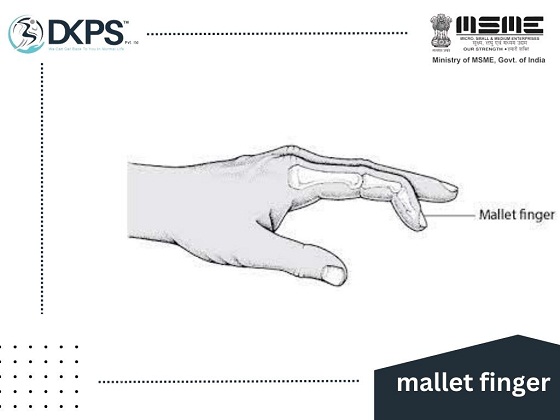- Home
- About Us
- DKPS Dealing
- BLOG
- Delhi NCR
- Delhi
- Physiotherapy at Home Near Me | Physiotherapist in South Delhi
- Best Chiropractor in Delhi
- Physiotherapist in Delhi
- Cupping Therapy in Delhi
- Home Nursing Services in Delhi
- Needle Therapy for Back Pain
- Sports Injury Physiotherapy
- Best Physiotherapist Visit at Home in Rohini Sector 24
- Physiotherapy at Home In Rohini Sector 9 |
- Physiotherapist in Pitampura | Physiotherapy at Home in Pitampura
- Physiotherapy at home in Rohini sector 29
- Physiotherapist in Paschim Vihar
- Physio home visit | Home Visit Physiotherapy |
- Physiotherapist in Saket | Best Physiotherapist in Saket |
- Physiotherapist In Janakpuri | Best Physiotherapist in Janakpuri |
- Best Physiotherapist in Punjabi Bagh | Punjabi Bagh Physiotherapist |
- Best Physiotherapist Service at Home in Dwarka, Delhi
- Best Physiotherapist in Chandigarh at Home Visit
- Faridabad
- Gurugram
- Noida
- Best Physiotherapy Gorakhpur
- Best Physiotherapist in Lucknow | Physiotherapist in Lucknow near me |
- Delhi
- Mumbai
- Delhi NCR
- Department
- Doctors
- Gallery
- Packages
- Contact Us
- Home
- About Us
- DKPS Dealing
- BLOG
- Delhi NCR
- Delhi
- Physiotherapy at Home Near Me | Physiotherapist in South Delhi
- Best Chiropractor in Delhi
- Physiotherapist in Delhi
- Cupping Therapy in Delhi
- Home Nursing Services in Delhi
- Needle Therapy for Back Pain
- Sports Injury Physiotherapy
- Best Physiotherapist Visit at Home in Rohini Sector 24
- Physiotherapy at Home In Rohini Sector 9 |
- Physiotherapist in Pitampura | Physiotherapy at Home in Pitampura
- Physiotherapy at home in Rohini sector 29
- Physiotherapist in Paschim Vihar
- Physio home visit | Home Visit Physiotherapy |
- Physiotherapist in Saket | Best Physiotherapist in Saket |
- Physiotherapist In Janakpuri | Best Physiotherapist in Janakpuri |
- Best Physiotherapist in Punjabi Bagh | Punjabi Bagh Physiotherapist |
- Best Physiotherapist Service at Home in Dwarka, Delhi
- Best Physiotherapist in Chandigarh at Home Visit
- Faridabad
- Gurugram
- Noida
- Best Physiotherapy Gorakhpur
- Best Physiotherapist in Lucknow | Physiotherapist in Lucknow near me |
- Delhi
- Mumbai
- Delhi NCR
- Department
- Doctors
- Gallery
- Packages
- Contact Us
Mallet finger
- Home
- Mallet finger

Mallet Finger-
Mallet Finger is a common finger injury that can occur due to a variety of reasons, including sports-related injuries, accidents, and even overuse. It is a condition that affects the extensor tendon, which is responsible for straightening the finger. Mallet fingers can be quite painful, and if left untreated, it can result in permanent deformity of the finger. However, with timely treatment, it is possible to recover from the mallet finger and regain the full function of the affected finger. In this article, we will discuss the causes, symptoms, and treatment options for mallet fingers, with a particular focus on the role of physiotherapy in its management.
Causes of Mallet Finger:
Mallet fingers can be caused by a variety of factors, including trauma, overuse, and age-related degeneration. The most common cause of a mallet finger is a direct impact on the finger, such as hitting it with a ball or other object. In some cases, the injury may occur due to a sudden forceful bend of the finger, which can cause the extensor tendon to tear or rupture. Overuse can also lead to mallet fingers, especially in individuals who engage in activities that require repetitive gripping or bending of the finger, such as typing or playing an instrument. Finally, age-related degeneration can cause the tendon to weaken, making it more susceptible to injury.
Symptoms of Mallet Finger:
The most common symptom of a mallet finger is an inability to straighten the affected finger. In some cases, the finger may droop downwards, giving it a characteristic appearance that resembles a mallet. Other symptoms may include pain, swelling, and tenderness around the affected joint. If left untreated, a mallet finger can lead to permanent deformity of the finger, as well as loss of function.
Diagnosis of Mallet Finger:
Diagnosing a mallet finger typically involves a physical examination of the affected finger. The doctor will look for signs of swelling, tenderness, and deformity, as well as test the range of motion of the finger. In some cases, an X-ray may be ordered to confirm the diagnosis and rule out any underlying fractures or other injuries.
Treatment Options for Mallet Finger:
Treatment options for mallet fingers depend on the severity of the injury. In cases where the injury is mild, the doctor may recommend immobilizing the affected finger with a splint or brace for several weeks. This allows the tendon to heal and prevents further damage to the joint. In more severe cases, surgery may be necessary to repair the torn tendon or reattach it to the bone. Surgery is typically only recommended if conservative treatment methods have failed or if the injury is severe.
Role of Physiotherapy in Mallet Finger:
Physiotherapy plays an essential role in the management of the mallet finger. It can help to reduce pain, swelling, and stiffness, as well as improve the range of motion of the affected joint. Physiotherapy may include a variety of exercises and modalities, including:
Range of Motion Exercises:
These exercises are designed to improve the flexibility and mobility of the affected finger. The physiotherapist will guide the patient through a series of exercises that involve gently bending and straightening the finger, as well as rotating it.
Strengthening Exercises:
Strengthening exercises help to improve the strength and stability of the affected joint. These exercises may involve using hand weights or resistance bands to perform specific movements, such as squeezing a ball or gripping a small object.
Modalities:
Modalities such as heat or ice therapy, ultrasound, and electrical stimulation can help to reduce pain and inflammation and promote healing of the affected joint.
Joint Mobilization:
Joint mobilization techniques can help to improve the range of motion of the affected joint by gently stretching the joint and surrounding tissues. This may involve the physiotherapist manually manipulating the joint or using specialized tools to help stretch and mobilize the joint.
Education and Lifestyle Modifications:
Physiotherapy also includes educating the patient about proper joint protection techniques and lifestyle modifications to help prevent future injuries. This may include tips on proper ergonomics, avoiding repetitive motions that strain the affected finger, and using appropriate protective equipment during sports or other activities that may increase the risk of injury.
Exercises for Mallet Finger:
Here are some examples of exercises that a physiotherapist may prescribe to help manage a mallet finger:
Finger Flexion and Extension
: This exercise involves gently bending and straightening the affected finger. Start with the finger in a splint or brace to help support the joint. Slowly bend the finger at the middle joint, then straighten it out. Repeat this movement for several repetitions, several times a day.
Finger Rotation
: This exercise involves rotating the affected finger in a circular motion. Hold the finger with your other hand and gently rotate it in a clockwise direction, then counterclockwise. Repeat this movement for several repetitions, several times a day.
Finger Strengthening:
This exercise involves squeezing a small ball or rubber band with the affected finger to help improve grip strength. Hold the ball or band in the affected hand and squeeze it for several seconds, then release. Repeat this movement for several repetitions, several times a day.
Conclusion:
Mallet’s finger is a common finger injury that can be quite painful and, if left untreated, can lead to permanent deformity of the finger. However, with timely treatment, including physiotherapy, it is possible to recover from a mallet finger and regain full function of the affected finger. Physiotherapy plays an essential role in the management of mallet fingers, including exercises and modalities to help reduce pain, swelling, and stiffness, as well as improve the range of motion of the affected joint. If you suspect that you may have a mallet finger, it is important to seek medical attention right away to receive a proper diagnosis and treatment plan.
If your doctor recommends physiotherapy, be sure to follow their instructions and attend all scheduled sessions. Consistency is key when it comes to recovering from an injury like a mallet finger. With the right care and attention, you can expect to see significant improvement in your symptoms and return to your normal activities in a timely manner.
In addition to physiotherapy, there are several other self-care measures you can take to help manage mallet fingers at home. These include:
Wearing a splint or brace to immobilize the affected joint and prevent further damage.
Applying ice to the affected finger for 15-20 minutes several times a day to help reduce pain and swelling.
Taking over-the-counter pain relievers, such as acetaminophen or ibuprofen, as directed by your doctor.
Elevating the affected hand above the level of your heart helps reduce swelling.
It is important to note that if you experience severe pain, swelling, or numbness in the affected finger, you should seek medical attention immediately, as this may be a sign of a more serious injury.
In summary, a mallet finger is a common finger injury that can be quite painful and, if left untreated, can lead to permanent deformity of the finger. However, with timely treatment, including physiotherapy, it is possible to recover from a mallet finger and regain full function of the affected finger. If you suspect that you may have a mallet finger, it is important to seek medical attention right away to receive a proper diagnosis and treatment plan. With the right care and attention, you can expect to see significant improvement in your symptoms and return to your normal activities in a timely manner.
How Drsinghphysiocare Can Help You:-
Drsinghphysiocare.com has very experienced physiotherapists well-versed in modern manual techniques and rehabilitation protocols. Moving patients from one place to another is complicated and can even increase the damage. Drsinghphysiocare.com offers physiotherapists home visits to rehabilitate patients in the comfort of their homes. Regular home physiotherapy by our physiotherapist helps patients actively and vigorously return to independence.
Senior physicians select our talented and experienced physiotherapists after they meet our strict recruitment standards. As a result of our higher standards and quality of service, many patients have recovered from the comfort of their homes and saved their valuable time and money.
Check More Related Articles-
- Varicose Veins
- Popliteal (Baker’s) Cyst
- Posterior Cruciate Ligament(PCL) Injury
- Lateral Collateral Ligament(LCL) Injury
- Medial Collateral Ligament (MCL) Injury
- Patella Dislocation
- Patellar Fracture
- Meralgia Paresthetica
- Hip Osteoarthritis
- Hip Impingement
- Hip Labral Tear
- TROCHANTERIC BURSITIS
- Hip Fracture
- Radial Tunnel Syndrome
- Biceps Tendonitis
- Cubital Tunnel Syndrome
- De Quervain’s tenosynovitis
- Burns
- Ganglion Cyst
- Boutonniere Deformity
